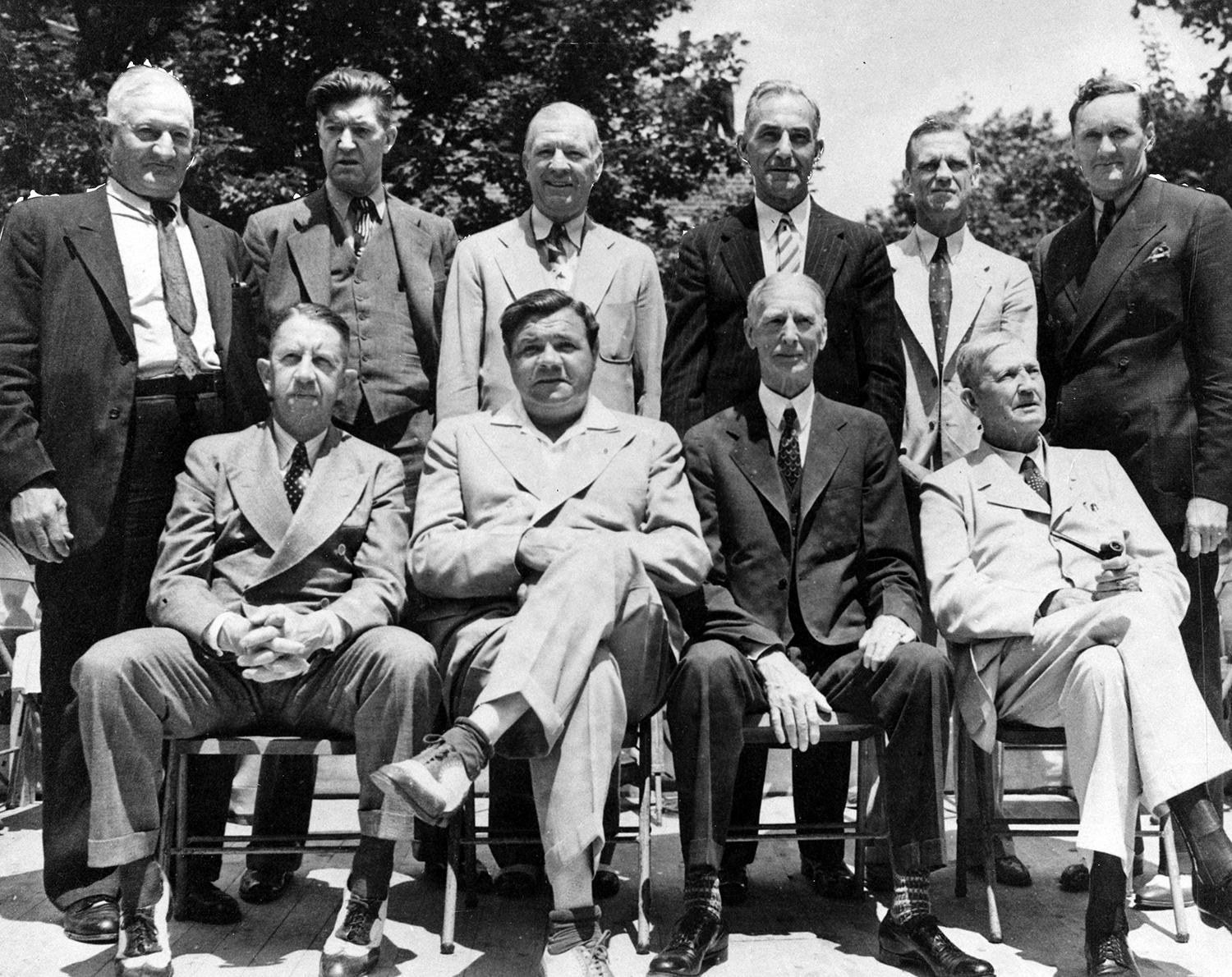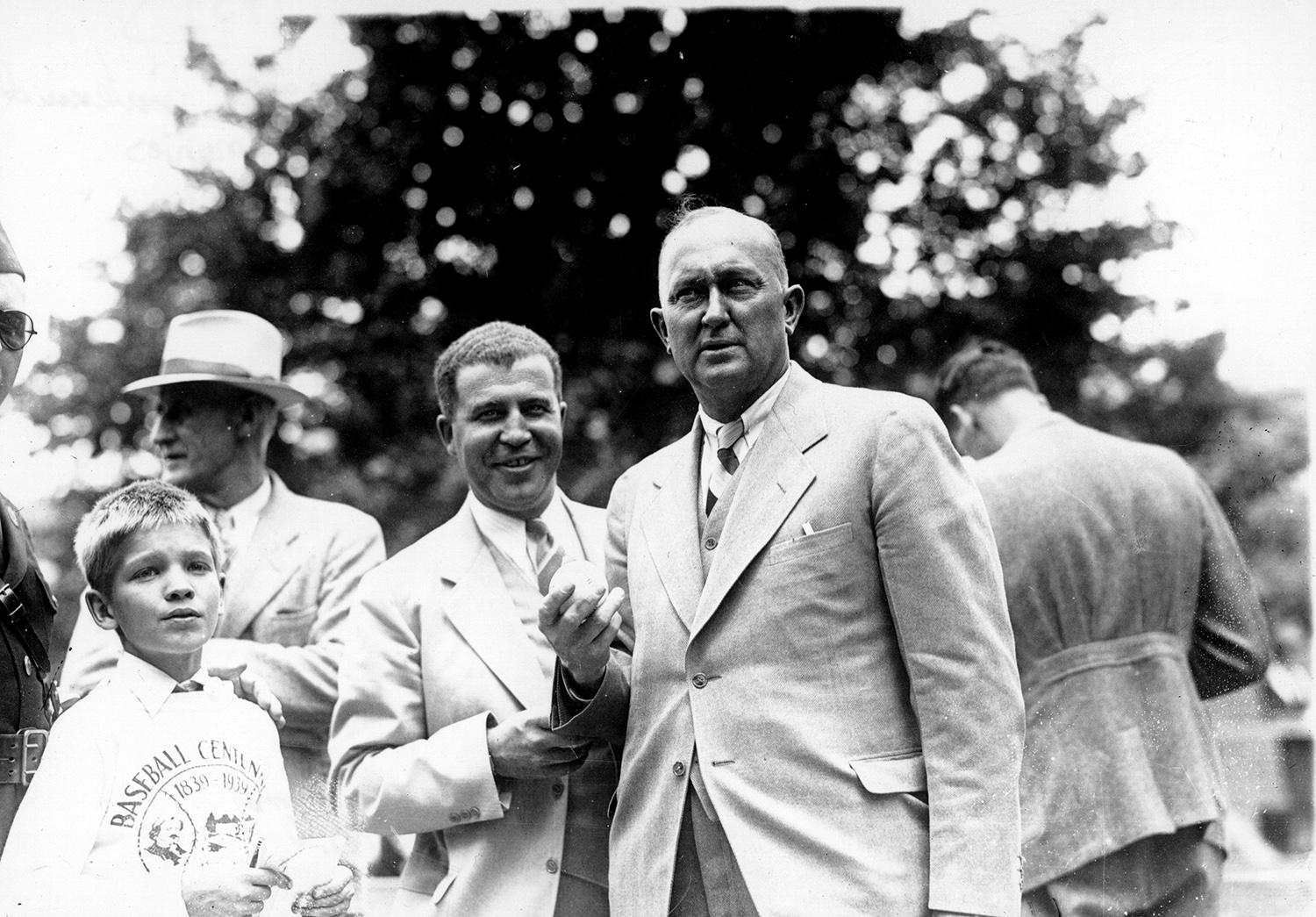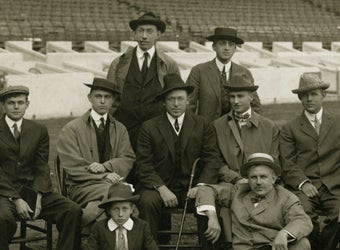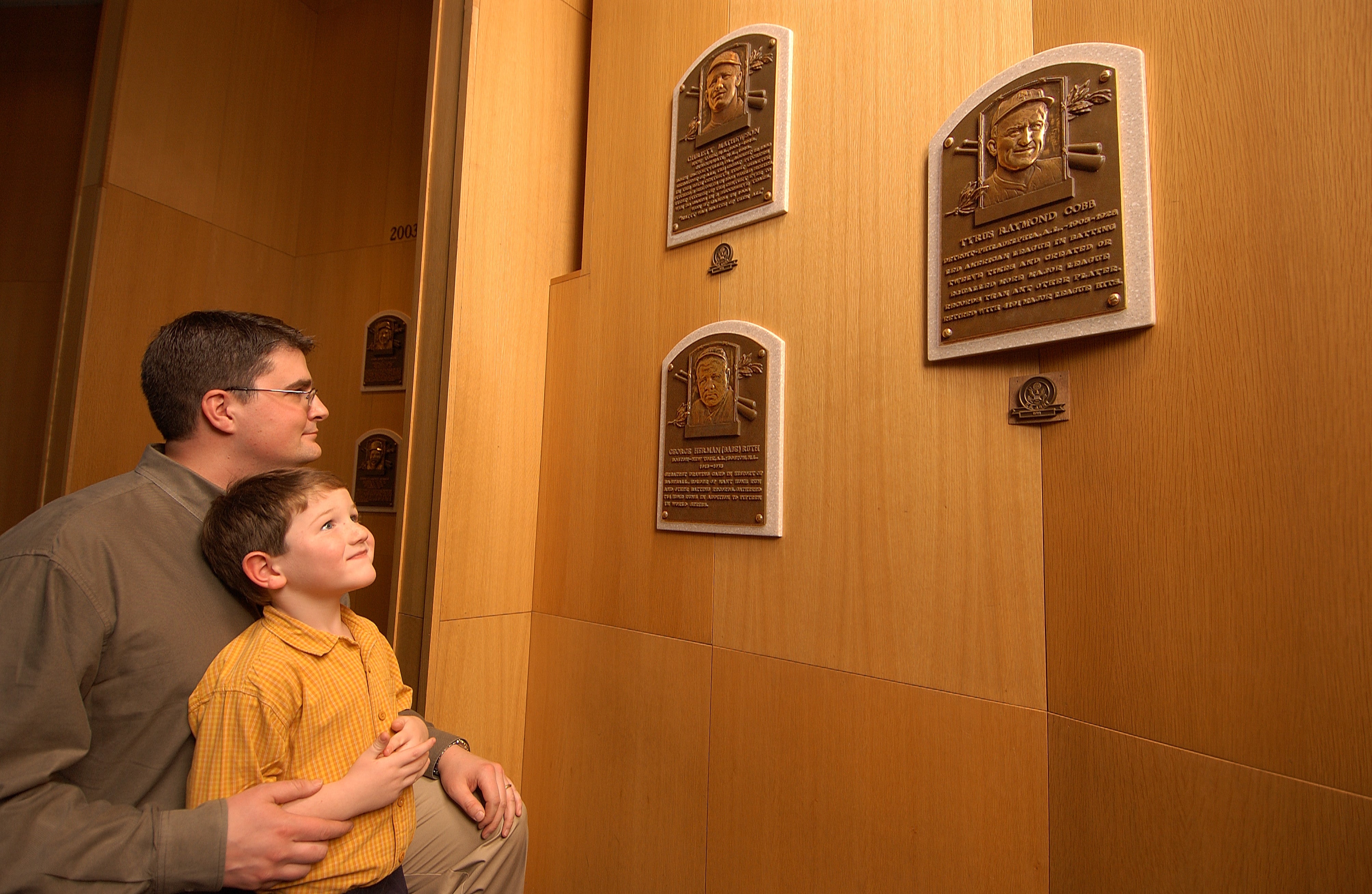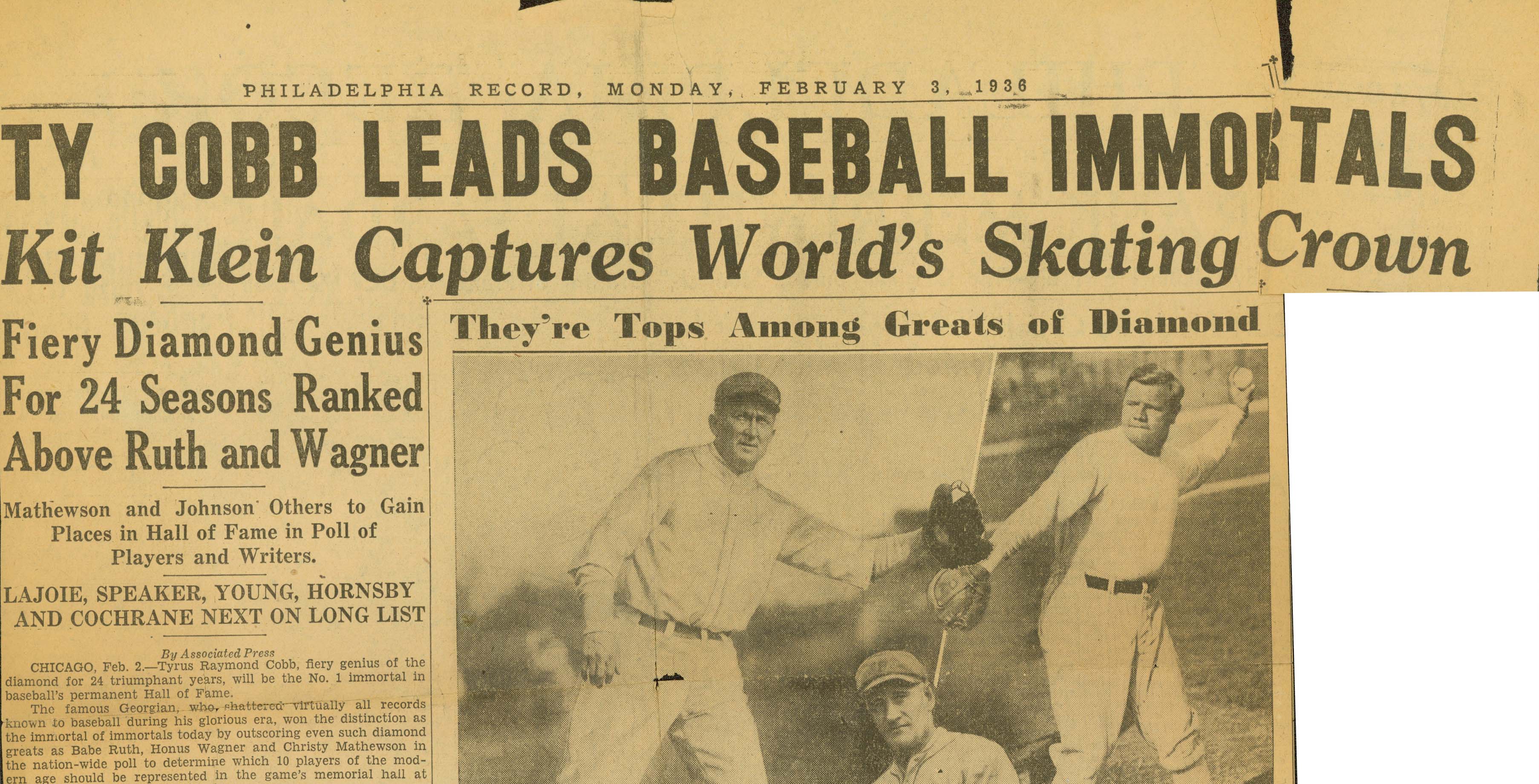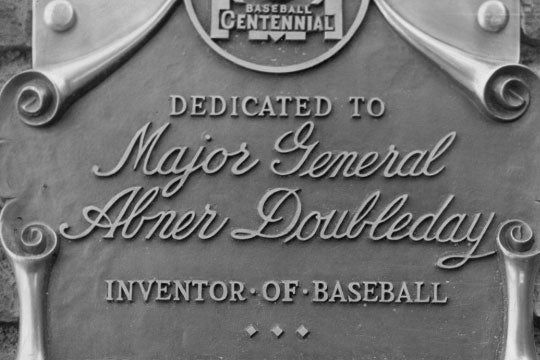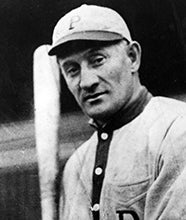- Home
- Our Stories
- First BBWAA Hall of Fame election remains landmark
First BBWAA Hall of Fame election remains landmark
In 1936, when the National Baseball Hall of Fame was in its embryonic stages, and when a still-standing voting electorate, the Baseball Writers’ Association of America, announced for the first time its names for enshrinement.
Franklin Delano Roosevelt was president. Jesse Owens was about to win gold at the Berlin Olympics. And the Hoover Dam neared completion.
Decades later, America has changed in countless ways. But the BBWAA remains the guardian of the Hall of Fame.
While a National Baseball Museum had been in place in Cooperstown since April 1935, plans for a Hall of Fame were first announced on Aug. 15 of the same year.
Later that year, on Dec. 23, 1935, a list of candidates was produced by Henry P. Edwards, secretary of both the American League’s Service Bureau and BBWAA. By this point, 10 players from the 20th century and five from pre-1900 were expected to be elected. The list of modern players were sent to each member of the BBWAA, while the stars prior to 1900 were to be selected by a committee of veteran baseball men best qualified to choose them.
“No player will be awarded a place in the Hall of Fame unless he polls at least 75 percent of the votes,” Edwards said.
The players from 1900 through 1935, 33 in total, included pitchers Christy Mathewson, Grover Cleveland Alexander, Cy Young, Ed Walsh, Rube Waddell, Walter Johnson, Mordecai Brown, Rube Marquard, Chief Bender and Lefty Grove; catchers Roger Bresnahan, Mickey Cochrane and Lou Criger; first basemen George Sisler, Lou Gehrig and Jimmie Foxx; second basemen Napoleon Lajoie, Eddie Collins, Rogers Hornsby, Johnny Evers and Frankie Frisch; shortstop Honus Wagner; third basemen Jimmy Collins, William Bradley and Pie Traynor; and outfielders Ty Cobb, Babe Ruth, Tris Speaker, Willie Keeler, Ed Delahanty, Ross Youngs, Ed Roush and Al Simmons.
Edwards also explained that the list was not a mandatory one, and that a number of young stars of the day, including Dizzy Dean, Gabby Hartnett, Hank Greenberg, Lefty Gomez and Paul Waner, were left off on the theory that they would get their chance at a later date.
Honus Wagner (left) pictured with Eddie Collins, prior to the first Hall of Fame Game in 1939. (National Baseball Hall of Fame)
Share this image:
Hall of Fame Membership
There is no simpler, and more essential, way to demonstrate your support than to sign on as a Museum Member.
The omissions of certain players from the previous 36 years caused such an uproar among the press and fans that by January 1936 Edwards had amended his original 33-man ballot to also include the names of Johnny Kling, Ray Schalk, Gabby Hartnett, Billy Sullivan Sr., Dazzy Vance, Lefty Grove, Bill Terry and Charlie Gehringer.
“The ballot did not say the voter had to vote for the players I listed,” Edwards said. “I simply set down a bunch of the best names without any intention to lock out anybody. I am led to suspect that some of the electorate is very dumb.”
It was also discovered around this time that some members of the BBWAA thought that they were being asked to list an all-star team instead of the 10 greatest players without regard to position. Those ballots sent in with what looked to be an all-star team were returned by Edwards along with a new ballot and a letter making it clear that the voter can nominate 10 players from any combination of positions.
Pictured above, a group shot of the living members of the Hall of Fame Classes of 1936, 1937, 1938 and 1939, at the first Induction Ceremony (missing from photo: Ty Cobb). Back row (left to right): Honus Wagner, Grover Cleveland Alexander, Tris Speaker, Nap Lajoie, George Sisler, and Walter Johnson. Front row (left to right): Eddie Collins, Babe Ruth, Connie Mack and Cy Young. (National Baseball Hall of Fame)
News of the Hall of Fame’s first BBWAA electees was released on Feb. 2, 1936, with only Cobb, Ruth, Wagner, Mathewson and Johnson receiving the required 75 percent of the BBWAA’s vote from the 20th century ballot.
Of the 226 votes cast, Cobb received 222, Ruth and Wagner received 215 each, Mathewson 205 and Johnson 189. Seventy-five percent of the total votes, or 169, were needed for election. In total, 51 players were named.
“I deeply appreciate the honor,” said Cobb, interrupting a round of golf in San Francisco to hear the news. “I am overwhelmed. I am glad they (the writers who elected him) feel that way about me. I want to thank them all.”
According to news reports, when the first ballot in which Ruth’s name did not appear surfaced, vote counting stopped momentarily for a discussion on how any one could leave the Bambino off the list.
The day after the election results were announced, John Kieran, honored with the J.G. Taylor Spink Award in 1973, wrote in The New York Times, “Still insisting that any voter is entitled to go to the polls and mark a ballot according to his own opinions and prejudices, it remains a mystery that any observer of modern diamond activities could list his version of the 10 outstanding baseball figures and have Ty Cobb nowhere at all in the group. Four voters accomplished that amazing feat.
“Eleven voters wrote down the names of their top 10 of modern times and ignored Babe Ruth completely. Eleven voters treated Hans Wagner in the same cavalier fashion.
“Beyond these items, the returns were fairly satisfactory. The fact that only five players received enough votes to qualify them for inclusion in the Baseball Hall of Fame is a good thing. A Hall of Fame for any field should not be filled too hastily.”
Bill Francis is the senior research and writing associate at the National Baseball Hall of Fame and Museum



